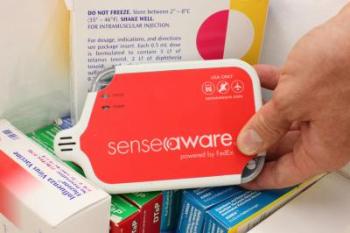International shipper, FedEx has developed Senseaware, a mobile temperature-sensing device for tracking high-value, perishable packages during transit.
 Senseaware mobile temperature-sensing device
Senseaware mobile temperature-sensing device
The device provides near real-time data on exposure to light, humidity, temperature, pressure, elevation and location. It connects to mobile phone networks to offer instant data to users.
Initially, package tracking offered data about the expected delivery time, date and route. FedEx approached National Institute of Standards and Technology (NIST) to include an alternative for precise temperature measurements in a portable device. The device created heat while transmitting data about the temperature of vaccines, medicines, blood, organs, tissues, and other temperature-sensitive materials. This led to erroneous measurement. NIST’s Temperature and Humidity Group developed an algorithm and performance data for correcting the temperature measurements. The group then collaborated with the National Voluntary Laboratory Accreditation Program to test the device.
The resultant device has a GPS receiver that helps monitor the location of a package during transit, even when aboard a plane, in real-time via a web-based interface. The device can store data for 30 days and is accurate within 0.02°C.
The accuracy and connectivity provided by the device makes it feasible for monitoring the temperature of surface air. NIST researchers are studying the potential use of this device for continuous monitoring of temperature for weather observations. They plan to install three devices in the NIST campus and have also planned to build a tower to study the strategies for 3-D temperature gradient mapping near the surface.